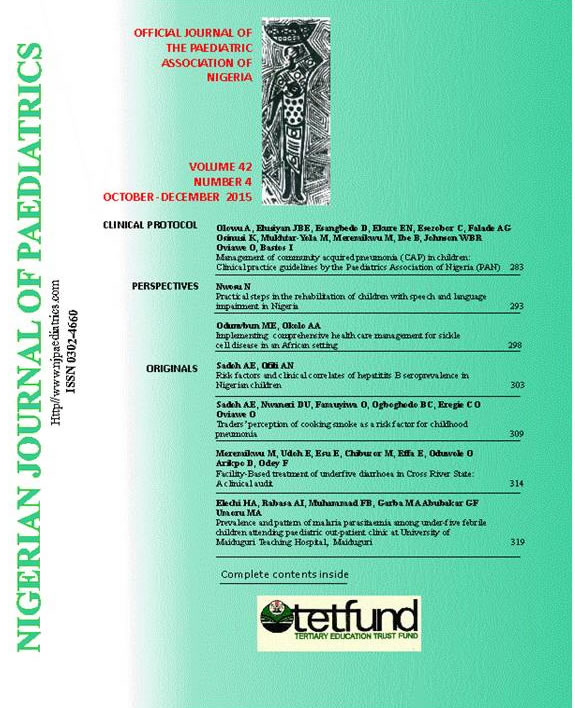Risk factors and clinical correlates of hepatitits B seroprevalence in Nigerian children
Abstract
Abstract: Introduction: Establishing risk factors for a disease enables early identification of those with the disease (through
screening) as well as targeted prevention and control measures. The significance and relative importance of such risk factors may
differ based on geographic location and they may change over time with the institution of control measures. In this study we examined the association between HBsAg seropositivity, some risk factors and clinical features. Methodology: Consecutive children aged 2 months to 16 years who were admitted to a Children’s Emergency Room were recruited. Data on the presence /
absence of risk factors such as previous blood transfusion, scarifications, receipt of unsafe injections and previous surgery were
obtained. History to ascertain previous or present history of jaundice and pale coloured stool was obtained. Examination to detect
hepatomegaly and spenomegaly was carried out. Blood samples were assayed for HBsAg.
Results: Of the 150 children recruited 84(56%) were male. The mean (SD) age of the children was 33.0(39.1) months. HBsAg seropositivity was 13.9%. Circumcision, scarification, ear piercing, history of blood transfusion, receipt of unsafe injections, present/ past history of jaundice and malnutrition were not significantly associated with being seropositive (p>0.05).
Conclusion: This study did not identify any pathognomonic clinical feature of hepatitis b seroprevalence. The lack of association between HBsAg seropositivity and the studied risk factors may represent a real improvement in infection control measures. Further research is required to ascertain if there are still some unidentified risk factors for hepatitis B transmission in Nigerian children.
Keywords: Hepatitis B virus, infection, risk factors
Downloads
Published
Issue
Section
License
This is an open-access journal, and articles are distributed under the terms of the Creative Commons Attribution 4.0 License, which allows others to remix, transform, and build upon the work even, commercially, as long as appropriate credit is given to the author, and the new creations are licensed under identical terms

